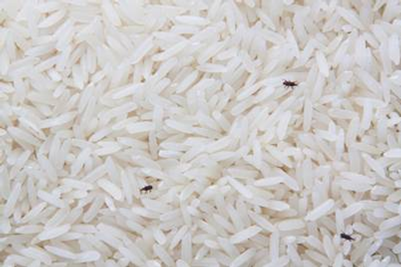Introduction
Rice weevils (scientific name Sitophilus oryzae) are a type of beetle that occur mainly in the tropics. Rice weevils are small in size (about 2 – 3 mm) and are most commonly found in rice. They can also be found in other stored grain products such as corn, millet, wheat, sorghum, oats, and barley. Rice weevils, whether in larval or adult stage, are not harmful to human beings as they are not known to spread any disease/infection or bite people.
This article provides more information on the occurrence of rice weevils and how consumers should store uncooked rice to prevent rice weevils.
Why are rice weevils found in rice?
Rice weevils can be found in crops in the field before they are harvested and brought to a food processing facility. These weevils may only be visible in food products some time later, and generally enter homes when these products are purchased by consumers. The presence of weevils can be identified through signs such as round holes in the kernels of rice grains, and increased moisture levels where grains may feel damp.
What should we do if we find weevils in rice?
Consumers can remove rice weevils by washing the rice. They can continue to consume the rice thereafter.While food products with rice weevils may not look appealing to consumers, food authorities usually regard them as natural and unavoidable substances that do not pose health hazards to consumers with no known illness or negative side effects if ingested.
How can we reduce the occurrence of rice weevils?
The industry must ensure that the rice they import and sell is safe for consumption. Importers should ensure that the rice is stored under proper conditions with dry or low moisture level and proper aeration and are checked regularly for insects.
Consumers should also ensure uncooked rice is stored properly by following these tips:
Store rice in a tightly sealed container and in a cool dry place.
Buy rice in smaller quantities if your consumption rate is low (e.g. if a 2-person household seldom cooks rice, they can buy 1kg packs, rather than 5 or 10kg packs).
Only open the rice pack when you need to, and do not open multiple packs at a time.
After finishing the rice in the container, wash and dry the container before re-filling with a new pack of rice.
Regularly check your stock to ensure that weevils are not present. If weevils are present, quickly remove them and aim to consume the stock quickly.

